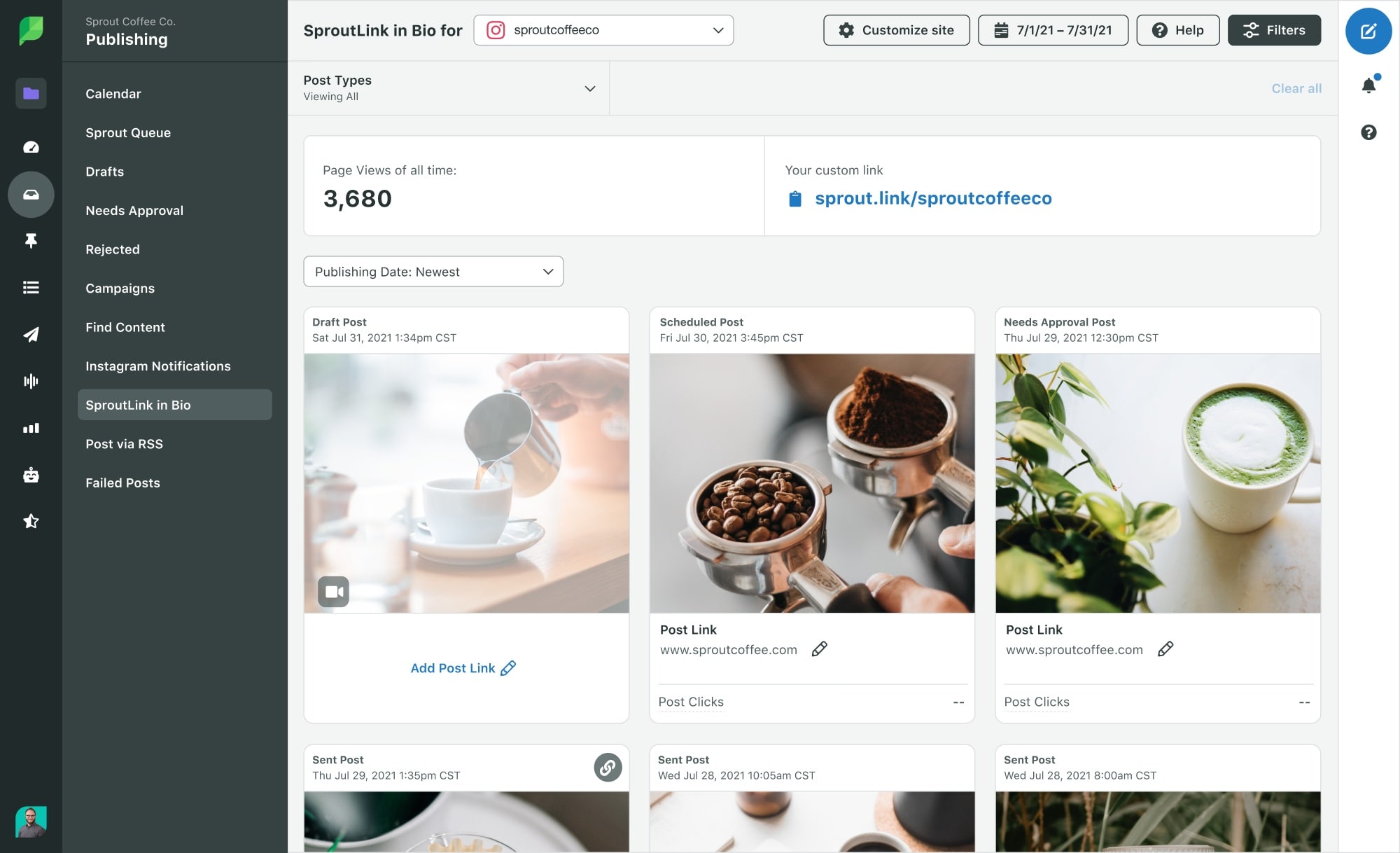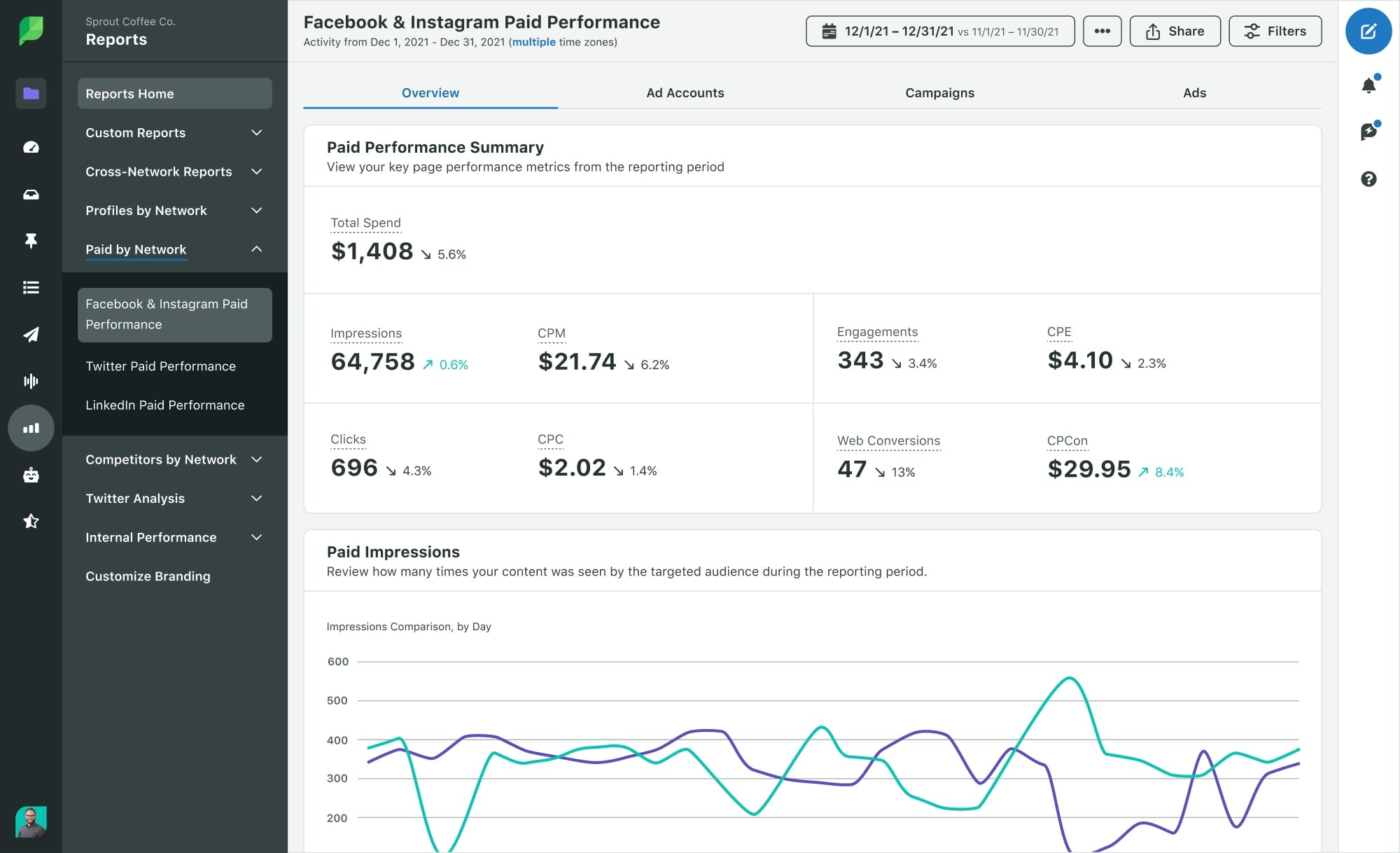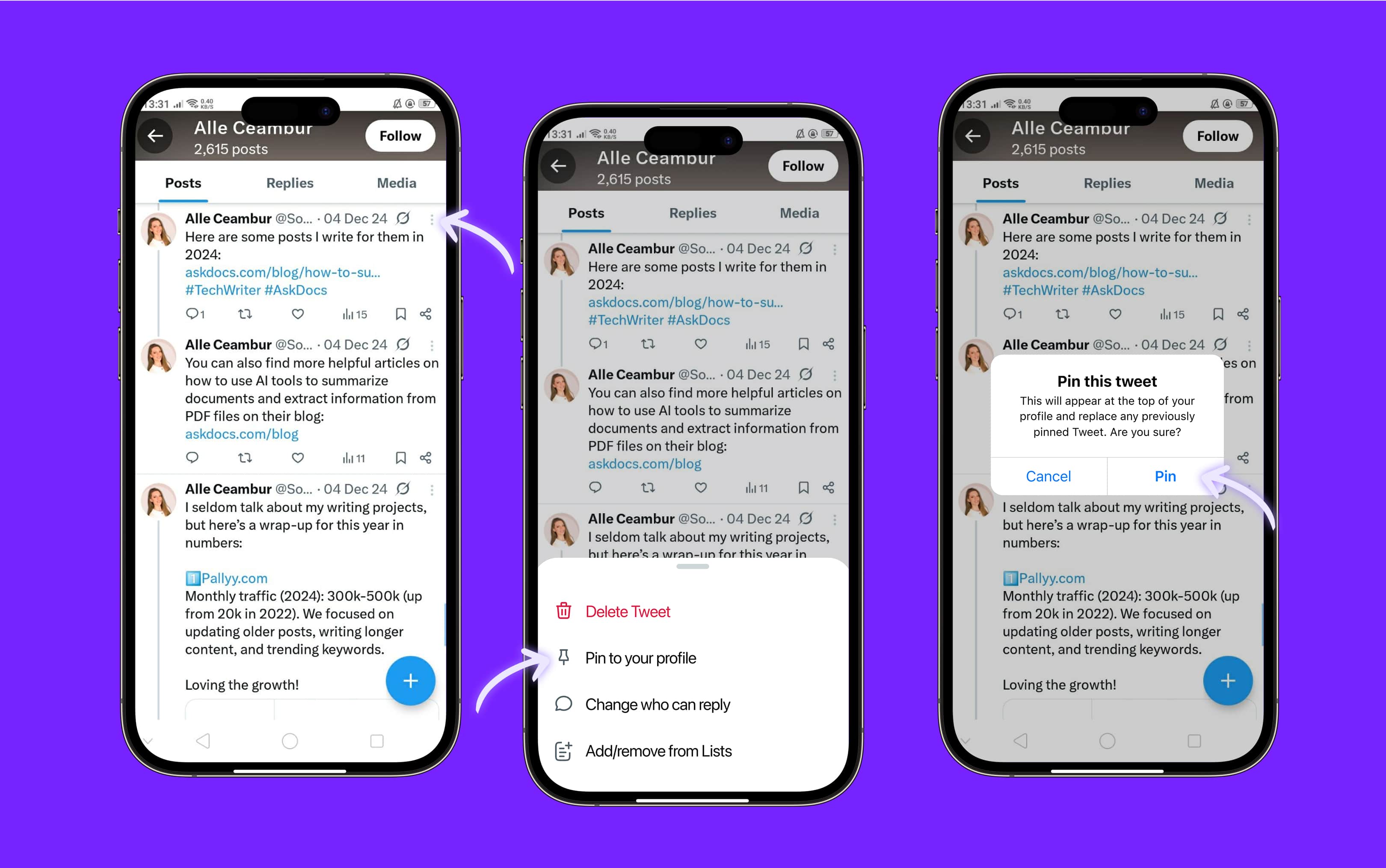Social media is more important to businesses than it’s ever been. As much as 96% of SMEs say social media channels are part of their marketing strategies. Few other channels offer as wide a reach and as good an opportunity to connect with customers.
But are you getting the most out of your social media? Are your platforms driving serious conversions? Increasing traffic to your site? Truly building your brand?
The truth is, running a successful social media account is about a lot more than simply setting it up and posting a few times a week. Today’s algorithms are complicated and crowded, so to stand out, you need to make sure your social media strategy is as healthy as possible.
Where to start? A social media audit is the answer. A social media audit won’t necessarily overhaul your strategy - but it’s the first step to doing so. In short: it’s the best way to assess your social media performance and identify key areas for improvement.
Chances are, you’re not a social media audit expert. But you’re in the right place. We’re taking our years of experience to the table and breaking down everything you need to know about social media auditing for better business results.
- What Is a Social Media Audit?
- Before You Start: Define Audit Goals That Mean Something
- The Complete Social Media Audit Checklist (Platform-by-Platform)
- Social Listening and Sentiment Check
- Audience Quality and Growth Patterns
- Content Performance Breakdown (Content Audit Phase)
- Paid Campaign Audit (Optional but Crucial)
- Competitive Analysis: Where Do You Stand?
- Tools You’ll Need for a 2025-Level Social Media Audit
- How Often Should You Audit Your Social Channels?
- Turning Audit Insights into Strategy
- Final Thoughts
What Is a Social Media Audit?
Many of us go to the doctor’s for an annual check-up, even when we don’t feel there’s anything wrong. Why? To assess your physical health and catch any potential problems before they snowball.
A social media audit is no different. Essentially, an audit is a review of your business’ social media performance. You’re taking stock of:
- What accounts exist
- What’s working
- What’s not working
- How everything aligns with your business goals
Many amateurs make the mistake here of assuming a social media audit means counting likes and followers. That’s the wrong way to think about it.
An audit should instead be about understanding how your content, engagement, and strategy stack up against your objectives. Its purpose is to give your business clarity and direction, no matter how many platforms you use.
Done right, an audit can help you:
- Uncover missed opportunities
- Fix inconsistencies
- Make smarter decisions moving forward

Before You Start: Define Audit Goals That Mean Something
You could dive into your audit right this very moment. But you’d soon be swamped in data that’s hard to make sense of. So, before you start, it’s essential to make sure you know what you’re looking for.
First, ask yourself what you’re actually auditing for (yes - different types of audits exist).
Are you auditing for performance (like engagement or conversions)?
Are you auditing for brand consistency?
Are you auditing for reputation management?
Do you want a full audit covering all of the above?
Next, you might want to consider who the audit is actually for - or the “audit audience”. Whether you’re reporting to an internal exec team or external investors will shape the level of detail and insight you need.
Finally, remember that metrics are just numbers unless you interpret them. Drill down on every stat you see. Always ask “why”. Why is engagement down on Instagram but up on LinkedIn? Why did we see a follower spike in March?
A social media audit isn’t just an exercise for itself. It should be tied at all times to your overall business strategy.
The Complete Social Media Audit Checklist (Platform-by-Platform)
Instead of analyzing every metric in every platform, use our handy social media audit checklist for all major platforms. This will show you exactly where you should be looking and how to spot real opportunities for growth or course correction, tailored to each platform.
Instagram Audit Checklist
An astonishing 83% of Instagram users (that’s almost 2 billion people) use the platform to search for new brands and products. That makes Instagram an incredibly important part of your social media marketing strategy.
Here’s how to audit your Instagram performance, by area:
Profile:
- Is the bio clear, keyword-rich, and action-oriented?
- Are your CTA and links up to date (and are they trackable)?
- Does your highlight cover reflect your brand visually and topically?
Feed:
- Do your content themes resonate with your audience today (not six months ago)?
- How are your reels performing? Your carousel posts?
- Are you following current search trends with your hashtags?

Stories:
- Are your retention drop-off rates good?
- Are people engaging with stickers and links?
Final tip: run a shadowban test if engagement has dipped. This is more common than you’d think!
Facebook Audit Checklist
Facebook is still the most popular social media platform in the world. It has over 3 billion users, making it fertile ground for brand marketing.
Here’s where to look to see if your account(s) is pulling its weight:
Page structure:
- Are all sections filled out?
- Is branding consistent with your website and other platforms?
Organic vs. paid content:
- What’s actually performing?
Groups:
- Are your groups active?
Messenger:
- How fast are your replies?
- Are your automated responses striking the right tone? Are they accurate?
Audience:
- How engaged are your audience?
Final tip: check your Lookalike Audiences. Old seed lists lead to poor targeting and wasted spend.

LinkedIn Audit Checklist
If you’re a B2B company, LinkedIn is where you should really be locking in. Almost half of all B2B marketers say LinkedIn is the best place to find high-quality leads, so it’s a fantastic platform for showcasing your brand.
Here’s an up-to-date social media audit checklist for LinkedIn:
- Is your Company Page optimized with the right keywords, custom button, and updated imagery?
- How does the reach on your company posts stack up against those of your employees? Often, personal advocacy beats branded content.
- Are your lead gen forms up-to-date and well-toned?
- How many users attend your webinar events?
- Are you capturing enough data?
- How often are your posts being mentioned or linked to externally?
- Are your key executives’ profiles in top shape?
TikTok Audit Checklist
If your brand is targeting under-30s, TikTok is the place to be. Along with Instagram and YouTube, TikTok is one of the most popular social media platforms around, and a great place to catch new customers.
Here’s how to audit your TikTok account(s) for a strong overview:
Fit:
- Does your content align with your niche? Does it “speak TikTok”?
Content:
- Do your posts hook the viewer in the first three seconds? TikTok itself says that’s the sweet spot. Anything more than that and retention drops off.
- How does your post frequency correlate to engagement?
TikTok SEO:
- Are you optimizing captions and using relevant keywords for discovery?
Trends:
- Are you using trending sounds or challenges strategically, not just for the sake of it? Trends are a huge part of the TikTok experience.

X (Twitter) Audit Checklist
Despite its very public overhaul in recent years, X (formerly Twitter) is still a very popular site with unmissable opportunities for engagement. Businesses shouldn’t neglect X as a useful marketing platform.
Here’s how to make sure your account is doing its job:
Content:
- Threads are gold, but are yours actually being read?
- How many replies per thread do you get?
- Are your quote-tweet ratios high or low? This is a great way to gauge conversation quality.
- When is your audience most active and responsive? Are you posting during these times? Are you using scheduling apps?
Profile:
- Do you have any NSFW follows, suspicious bots, or off-brand retweets? Your profile should be squeaky-clean.
- How’s the CTR on your pinned tweets?
- Does your brand voice sound human and consistent, or like a robot tweeting press releases?

YouTube Audit Checklist
Many don’t count YouTube as a social media platform. We disagree. Not only is it a fantastic place to share your brand and drive sales, it’s actually the world’s second-largest social media platform (after Facebook), with over 2.53 billion active users! Ignore YouTube at your own expense!
If you are on the YouTube train already, here’s where to look into your performance:
Core analytics:
- How is your thumbnail click-through rate, average watch time, and audience retention?
Channel:
- Are your layout and playlists helping users binge your content or just getting in the way?
- Are you using the Community tab to boost engagement between uploads? This is a massively underused feature of YouTube, by the way.
- How is your sub growth to video frequency?
- Are your end screens and info cards doing everything they can to convert users?
Social Listening and Sentiment Check
Numbers are great, but they’re not everything. What’s more important than how many people engage with your brand? How those people feel about your brand.
This is what we call a “sentiment check”. Businesses can get an idea how they’re perceived with social listening.
Essentially, this goes beyond volume and looks at the tone and sentiment expressed in others’ mentions of you. It might ask questions like:
- Are people hyped about your product?
- Do people complain about support?
- Are people even talking about you at all?

Doing this manually would take a long, long time. Too long to even consider. The best way to perform a sentiment check is to use tools like Brandwatch or Sprout Social. These give you insights to help you monitor things like brand mentions and comments without the hands-on effort.
Plus, some software can even let you set alerts for sudden sentiment shifts. Think of that as your “early warning” system.
The most important thing of all: actually take sentiment on board and loop it back into your strategy moving forward!
Audience Quality and Growth Patterns
We all love seeing that follower count grow. But the truth is, the number isn’t the most important thing. Not all followers are good followers. Bots, for instance, can just inflate your numbers while dragging your engagement down.
So, running a social media audience audit tells you who’s following you, not just how many. Ask if they’re:
- Your target demographic
- Active on the platform
- Engaged with your posts
You might also want to assess how your audience has grown (or plateaued) over the past 6–12 months, and see which campaigns were behind follower spikes.
Don’t forget churn, too. We hate to see followers go, but we can’t ignore it when they do. Is there something that’s putting people off in your tone or messaging?
Don’t worry, you don’t have to do all this manually. There are many amazing tools out there to help you. Audiense and HypeAuditor are good options, but even native X and Meta analytics tools can be a good start!
GROW YOUR INSTAGRAM FOLLOWING VIA OUR CELEBRITY CAMPAIGNS
Leverage the power of the worlds A-list celebrities to grow your Instagram every month
VIEW CAMPAIGNSContent Performance Breakdown (Content Audit Phase)
A social media audit might give you an overview, but a social media content audit drills down more specifically into your actual content. The importance of this can’t be overstated. Content really is king in 2025, and getting it right will lead to more conversions.
Start by ranking your top-performing content by platform and format (Reels, carousels, stories, YouTube shorts, threads, etc.) Ask: What’s really driving engagement and conversions?
Then, split your content into evergreen vs. trend-driven buckets. In other words, are you relying too heavily on fleeting trends that don’t really “speak to your brand”, or are you building assets with long-term ROI?
Never neglect your CTA, either. A killer CTA is clear and consistent across all posts (no matter the post type). Are you always pointing your audience in the right direction (as in comment, share, buy, sign up)?
Paid Campaign Audit (Optional but Crucial)
There’s a reason the social media ad spend market is worth over $276.72 billion. It works. At least, it works when it’s done right. Good paid advertising can see a 200% ROI, sometimes even more.
You should take the time to make sure your ads are doing their job as well as they can. This will take a paid campaign audit.
Of course, the starting point is to review what campaigns actually ran in the past quarter or year. Break them down by objective: traffic, conversions, lead gen, awareness. Ask these questions:
- Which platforms delivered the best ROAS (return on ad spend)?
- What audiences performed best and which ones flopped?
- What messaging or formats outperformed the rest?
Don’t forget post-click behavior. It’s crucial to know whether, say, your landing pages converted or bounced leads once they were there.
Lastly, make sure your tracking setup is still airtight. Attribution gaps in 2025 equal ad spend in the trash.
Competitive Analysis: Where Do You Stand?
It’s all very well cleaning up at home. But to get a true understanding of where you stand in the market, you’re going to need to peep through the curtains. A strong audit includes strong competitor analysis.
Here’s a proven step-by-step approach to competitive analysis audits you can use at any time:
- Choose 3-5 competitors or brands you admire.
- Dig below the surface and take a close look at engagement rates, growth patterns, content frequency, and audience interaction. Tools like Rival IQ and Social Blade are indispensable here.
- Ask these questions:
- How fast are they responding to comments?
- Who’s leading creative trends in your niche?
- Are they dominating with UGC, memes, or deep dives?
- Look for white space. These are things your competitors aren’t talking about that your audience still cares about.
- Evaluate their earned media. That means tracking their press hits, podcast guest spots, or influencer mentions.

Tools You’ll Need for a 2025-Level Social Media Audit
Tools are a must for any social media audit in 2025. However, don’t oversaturate your process with too many of them. As they say, too many chefs spoil the broth.
All you need are the right tools. Usually, just a handful will do. Here are a few ideas to get you started:
Native analytics (these can tell you a lot about platform-specific performance without the need for any extra tools whatsoever):
- Meta Business Suite
- YouTube Studio
- LinkedIn Analytics
Tools can really help with that. Try:
- Brandwatch
- Sprinklr
- Mention
If you want to see how your social activity connects to web actions off social, you’ll need:
- Google Analytics 4
- UTM tracking
Another important area is audience quality and influencer analysis. For that, check out:
- HypeAuditor
- Audiense
For content performance:
- Rival IQ
- Shield (for LinkedIn)
Lastly, it can be handy to have a centralized dashboard to gather all your findings together. Luckily, there are tools for this, too:
- DashThis
- AgencyAnalytics
- Sprout Social
How Often Should You Audit Your Social Channels?
The frequency with which you conduct a social media audit depends on what exactly you’re trying to achieve. As a general rule, we recommend auditing at least once every 6 months.
However, things change if you’re carrying out specific initiatives. For example, if you’re:
- Running a high-volume campaign
- Launching a new product
- Pivoting your brand
Quarterly audits are smarter in this case.
In some cases, even more regular check-ins with smaller, area-specific audits can be a good idea. You might want to check things like Instagram engagement or broken LinkedIn links every week or so.
The trick is to try to integrate audits into your workflow. Don’t approach them like a big one-off event. Regular upkeep saves you from major overhauls later. Also, align audits with key business moments: pre-launch, post-campaign, end of quarter. Timing your audits around real business goals keeps them relevant and actionable!
Turning Audit Insights into Strategy
An audit is only valuable if it leads to action.
Too many agencies and “audit professionals” will simply hand you a pretty report full of statistics. However, what you really need is a clear action plan.
- Start by prioritizing what will move the needle fastest. Is that fixing CTA clarity? Reworking your content mix? Optimizing ad spend?
- Assign tasks across your team. Updating highlight covers? Call in the designers. Refining captions? Find a copywriter.
- Set internal KPIs and timelines for implementation so the insights don’t gather dust.
- Make sure to hold a quick post-audit huddle to align everyone.
This strategy really works. Want proof? Choose a single area to analyze this week. Say, CTR on LinkedIn posts. Make the necessary changes. Assess post-audit performance after making strategic changes - hopefully you’ll see a big jump from a relatively small adjustment!
Final Thoughts
Having social media is one thing. But having social media without a strategy is as bad as not having it to begin with. And to make your strategy really pop, a social media audit is crucial.
Too many brands see that their social media channels are underperforming but don’t take the time to find out why. Instead of building smarter, they simply build louder. And still fail to get results.
A professional social media audit is your ticket to get ahead of the competition and make serious gains.
To do this, why not partner with a trusted digital marketing agency with special expertise in social media auditing? Influize has the skills and expertise you need to leave a real mark and boost those all-important KPIs for good. Get in touch with our team today to find out more!
Frequently Asked Questions
How do I identify underperforming social posts?
Go beyond likes. First, you’ll need to find your average reach and engagement per post. This is key. Underperforming posts typically have low reach and low engagement relative to your average.
You can actually use native platform analytics tools to see this. These will tell you what’s falling flat in terms of views, shares, saves, or click-throughs compared to past content.
Should I audit my competitors’ social media too?
Absolutely, yes. It’s fundamental. There’s no way to tell how you’re performing in your market if you don’t analyze your competitors.
It may sound like a lot of work, but it doesn’t have to be as long as you have the right approach. Start by choosing 3-5 competitors. Take note of things like what platforms they prioritize and how often they post. See how much engagement they get.
Finally, see where they’re missing out and where you can penetrate. You’re not copying, you’re simply gathering intelligence.
How do I track follower growth vs. fake followers?
It could be time to bring in an external tool. Tools like HypeAuditor and Audiense will flag bot-like behavior and inactive accounts so you can better understand who’s who.
This is super important. Fake followers might not seem like a big problem. But they are. Fake followers means low engagement!
Should I audit paid and organic content separately?
Yes. Not only that, you should compare them side-by-side, too.
Paid and organic content often serve different goals. That means they require different benchmarks. For instance, for paid, you should look at ROAS, CTR, and conversion rate. For organic, reach, saves, shares, and community engagement.
Of course, if content performs well in both forms, that’s the real gold.
How do I assess the ROI of past social media campaigns?
“ROI” isn’t a catch-all term. So the first thing to do is define what ROI really means for you in this context. Is it leads? Sales? Signups? Brand lift?
You can use UTM links and Google Analytics 4 to trace traffic and conversions from each campaign from there.
Figure out how much you spent on the campaign in question and weigh the return in terms of value.
What common red flags should I look for?
Many businesses see their social media isn’t living up to its promise but have no idea why. Some, however, don’t even know when their social media is underperforming (or worse, draining their resources with no ROI).
Look out for things like engagement dropping while follower count grows and lots of impressions with few click-throughs. Likewise, inconsistency in tone across platforms can be a real danger. You might also notice that your paid ads are performing much worse than your organic content, or your audience demographics don’t align with your ideal customer.
These are just a few things that indicate it could be time for a proper social media audit!

